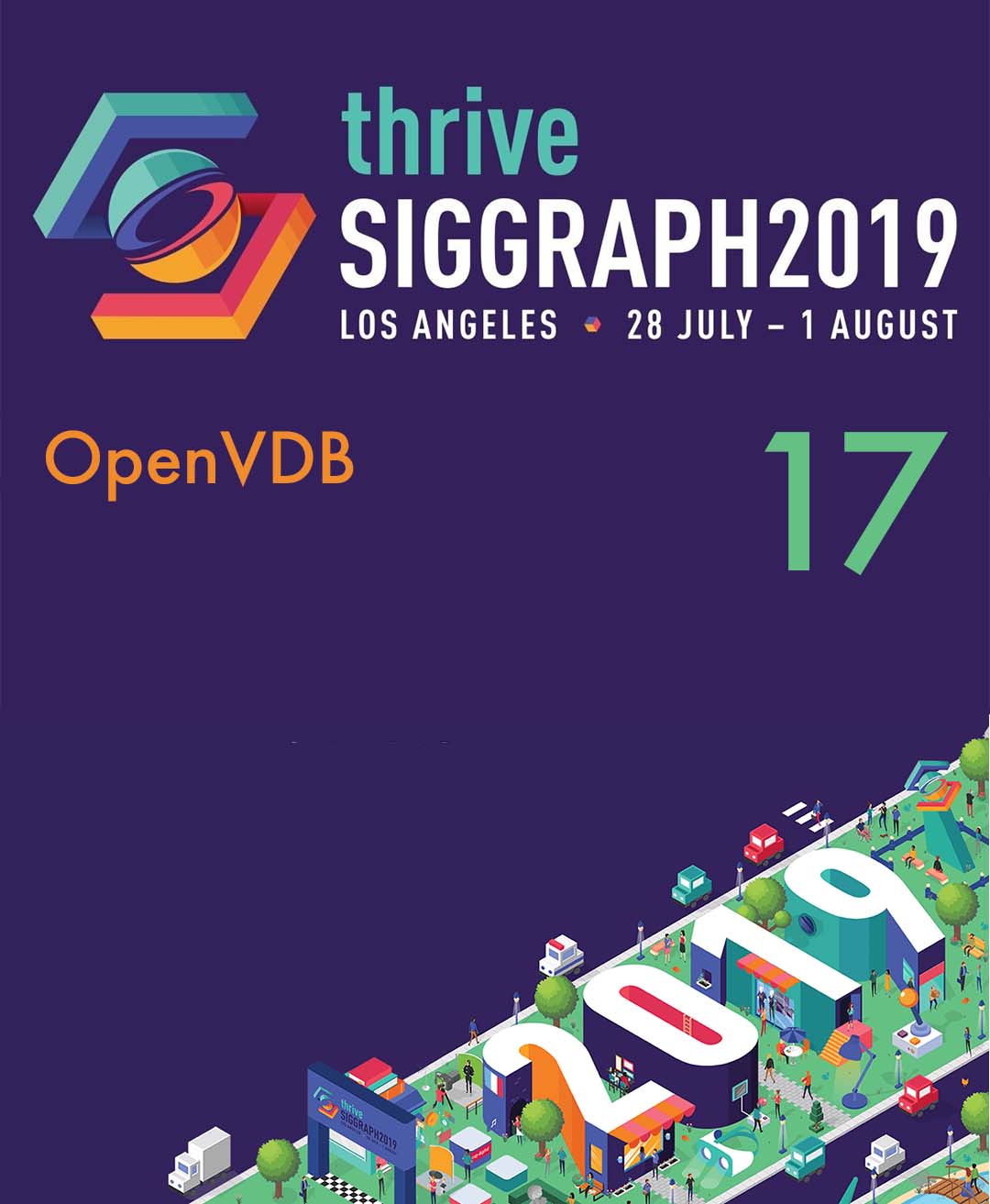“OpenVDB” by Museth, Avramoussis and Bailey
Conference:
Type(s):
Title:
- OpenVDB
Organizer(s):
Presenter(s)/Author(s):
Entry Number: 17
Abstract:
Description
This course will cover the compact volume data structure and various tools available in the open source library OpenVDB. Since its release in 2012 it has set an industry standard and has been used for visual effects in over 150 feature movies. Last year this open source project was the first to be adopted by the new Academy Software Foundation (ASWF) and the Linux Foundation. This means that the project is now changing governance and more importantly has open up for numerous external contributions. We will describe this new governance, specifically what it means for would-be contributors, and of course what has already been added to the project since last time this course was offered at SIGGRAPH in 2017.
Overview:
The purpose of the course is twofold; to introduce novice end-users and artists to the basics of our data structure and its Houdini integration, while also giving developers a more in-depth description of the accompanying toolset, class structures and various optimization techniques. Since we last gave a course on OpenVDB @ SIGGRAPH (in 2017) the project has undergone a significant change in that is was the first open source project to be adopted by the newly formed Academy Software Foundation (ASWF), run in close collaboration with the Linux Foundation. This means that the project is now for the first truly open and free from any particular VFX studio. This has dramatically changes the governance, the rate of adoption of new features and of course the process for doing so. These are all topics that we wish to cover in details this years. Specifically we will be talking about the new AX JIT language for OpenVDB, new tools and features for point grids, new core level set and simulation tools, and possibly even a complete new multi-resolution data structure (depending on our release schedule). We currently have three presenter, two of which have presented in this course before and one (Nick Avramoussis from DNEG) who is new to this course. If the multi-resolution data structure, mentioned above, is ready we will likely include a fourth presented as well. Course material from previous version of this course is available online: http://www.openvdb.org/documentation.
Audience:
This course is targeting both practitioners of OpenVDB, e.g. FX artists, but also software engineers that wish to use our library in their own software projects.
Prerequisites:
A rudimentary knowledge of typical workflows for volumetric modeling and/ or simulations, e.g. voxels, iso-surfaces, level sets and voxelization. Knowledge of C++ is also advantageous but by no means required.
Additional Information:
Production & Animation
Research & Education
Adaptive Technology





